Jsu Garcia has recently completed a 3 1/2 hour film biography of J-R that has premiered at the Conference of the Mystical Traveler 2013 in Los Angeles and in London. We caught up with him in Los Angeles in October, just after the month-long John-Roger travels in England that he organized and led along with Nicholas Brown. For more information about the movie, go to www.mysticaltraveler.com/
David Sand (DS): When did you start work on the movie?
Jsu Garcia (JG): Right now it’s all a blur. In the winter of 2010, after we completed The Wayshower, I got a hit inside to start interviewing the “elders” in MSIA to get their stories down on film while we still had the chance. Laurie Lerner came along and offered to produce it and got us a camera. It was great to have our own camera, because renting one every time we wanted to interview someone would have cost a huge amount of money.
I was able to travel with that camera all over the world to do interviews. I didn’t know what I was doing. I just knew I was going to gather “data.” Thor Wixon, the second unit cameraman on The Wayshower, jumped on board as the Director of Photography (DP). So I started getting interview after interview, asking everyone the same five questions: How did you meet J-R? What was it like? What’s your favorite food? What would you like to tell J-R? During times of controversy, how did you get the strength inside of you to keep going?
DS: At what point did you realize you were doing a documentary?
JG: As soon as I rolled the camera I realized I had something more than just interviews, that this was something bigger. We interviewed a lot of people who were there from the beginning, including some who have now passed over like Norma Howe, Joe Ann Cain, and Steve Ferrick. The rolling of the camera was like the Traveler and the Light overshadowing the microphone when you share at Living in Grace. People were intense—laughing, crying. It was really affecting me. I was watching testimonials from people who had sweat blood and tears in the Movement. These were the people who created the Movement and were part of it. I was being completely humbled. Just because I live with J-R it doesn’t mean anything—these guys are the real guys. When you hear their stories you think, “Wow, I’m sorry I judged you.” We went to the original sources, the people who were actually there, like Pauli Sanderson and Candace Semigran, and we got it in their own words.
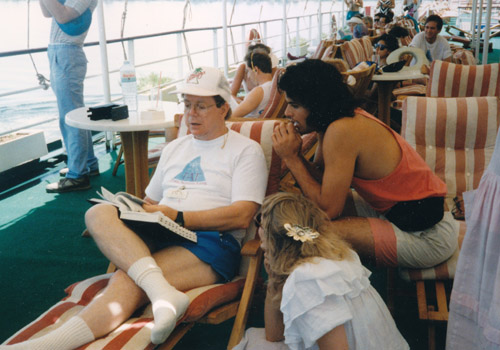
I wanted a lot of points of view so no one person would alter or compromise my search. I didn’t care if they were people who had left the Movement because at the time they were involved and the Movement was blossoming—just like in the Shakespeare lines that J-R quotes in the movie:
There is a tide in the affairs of men,
Which, taken at the flood, leads on to fortune;
Omitted, all the voyage of their life
Is bound in shallows and in miseries.
On such a full sea are we now afloat,
And we must take the current when it serves,
Or lose our ventures.
The first couple of editors started piecing the interviews together and asking for other footage to fill in the blanks. Those early editors, , especially Matthew Rundell, who edited The Wayshower, would ask questions like, “When was J-R born?” So we’d find footage that dealt with that, and pretty soon we’d have footage about his whole life. We found seminars we he talked about early parts of his life, like the car accident before he got the keys to the Traveler consciousness.
So we would pull this footage together and we had sections of different eras of J-R’s life. We created a board that listed all these different eras and what we had on film. So I was floating around with a ton of material, 8mm film that had been scanned in the ‘90’s (the scanning quality was OK but today the scanning quality is off the hook, so we needed to re-scan it).
I didn’t know where it was going or even how to access the MSIA archives. That’s when Barbara Wieland, the MSIA librarian and archivist, came along. She was able to get me anything. Whatever we asked for from the archives Barbara would find it, and then Phil Danza, the head of Now Productions, along with Nir Livni, would organize and copy the footage. Chuck Moore of NOW Productions would make 24-hour-a-day trips to the vault where all J-R media is stored to get whatever I needed. Amazing guy. In the process we even had a chance to upgrade the archival system because sometimes there were discrepancies between the database and what was in the vaults.
As the project grew bigger the original editors needed to go on to other projects because I couldn’t afford to keep paying them. We were floundering for 2 months and I was desperate to find editors. You can’t really edit this stuff without “getting” J-R. And that can take years. It’s taken me 27 years to “get” J-R—just like all of us. So if you find an editor who’s really good, how do you get him to a place where he understands enough to really do the editing? It would take a month to two months in the editing room just for an editor to “get” J-R. Finally I found two great editors, Aaron Thacker, who did the graphics, and Josh Muscatine.
I called Lisa Day, who edited Great Balls of Fire, the Jerry Lee Lewis bio, and told her I was in trouble. She told me to relax and just build the skeleton first, and then later on add all the different layers. That gave me a direction, and we started to build the bones of the movie—all the different phases of J-R’s life—and find the footage that related to those. Then we could fill in the missing parts with photos, interviews, seminars, etc. Someone would talk about a person in an interview and I could call up Barbara to get photos of that person, and suddenly I’d have hundreds of photos.
Without J-R, the MSIA Presidency, NOW Productions, and all the MSIA tithers and seeders out there, none of this would have been possible. I got to see how the money is spent and the amazing job that’s being done in organizing, storing, and making all the media available. Anybody now can punch in what they’re looking for and access media from any point in the history of J-R’s work. I was able to look for footage not just by date or seminar number, but even by city, so we could recreate the history of MSIA in any area we wanted to.
We went through 100 terabytes of data. We narrowed that down to ((290 gigabytes)) for the final film. So you can imagine how much information we went through. We were driving ourselves hard for two years. I don’t know if the machine will ever run as hard again as we ran. I would be like, “Phil, I need this NOW,” and Phil would say, “Yeah, I’m on it.” And it would get done. Mark Lurie was my right-hand man to keep the legal area lined up. Mark always had the attitude of, “I’m here for you. Whatever needs to get done, we’ll do.” I work for free. What I get is the enjoyment of being part of history.
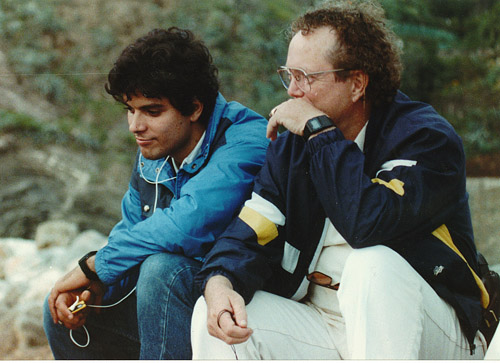
It was almost as though there was nothing I couldn’t do, nothing I couldn’t create—mostly because I would go to J-R. I would say, “J-R, I need to interview Larry King, can you put it in the Light?” The next thing I know, I have an appointment with Larry King. I’d say, “I need Tony Robbins, how am I going to get to him?” I ran into his lawyer the next day. I didn’t go looking for stars, I went looking for the people J-R touched during his life.
We went through an incredible number of rolls of film to find stills. There is even film that was never developed, and we had to scan it to make contact sheets just to see what was there. And luckily some of the early staff people filmed J-R with the old 8mm film cameras. The bulk of the expense of the movie was restoring all that 8mm footage. We had something like 55 hours of this stuff that has never been seen before. We made a big investment in restoring that 8mm film, thanks to the Presidency and J-R. And it looks gorgeous. There is also an old Laren Bright interview with J-R that was shot with a camera that was tethered to a recording device. That technology doesn’t exist anymore, so we had to find someone who could scan that to get it into a format we could use.
DS: What was it like to look at all that early footage?
JG: Everything was exploding, and the 8mm film really reveals a bygone era. It’s like a time capsule. You see J-R in that context and of course you’re in love with him. Just imagine having film of the time of Jesus, and seeing all the people with him. Now you can be a witness to something amazing that happened in our own time. In 100 years we’ll all be gone. Will the film be what people look at to know how it was? I don’t know, it’s digital, and who knows how long that will last? It might just disappear with the ones and the zeros. But the journey was amazing and I was investigating J-R like a reporter.
I learned to be a reporter, and then I learned how to be a scholar. I’d see a person in the background of a piece of film from 1970-something and wonder who it was….and then the editor would come to me all excited and say, “I think I found this who this person was…look at this!” And then we’d see them in the 8mm footage. We’d be looking at a piece of film and have no idea where it was from, and then we could enhance it and pan down and see a San Francisco newspaper under the table, and we’d know the location. We’d piece together times and locations according to J-R’s hairstyles, or a car he was driving, or some other detail.
I don’t know if there are many people who have as much archival footage of their lives as J-R. (Maybe George Harrison—I highly recommend the documentary of his life, Living in the Material World.) I was pushing everybody hard to get all this material together, especially NOW Productions and Barbara Wieland. Even with all that material there are still gaps where there is no film. There are places where we’ve had incredible experiences, like in Egypt on some of the PAT IV’s, where we don’t have everything filmed, so we had to go to photographs or interviews.
We finally assembled a two-hour version. We used code-words for the different assemblies of the movie that came from the different versions of the space shuttle. That first two-hour version that we finished in 2012 was the Endeavor. The final one would be Atlantis.
When we screened that 2-hour version we got feedback that there wasn’t enough of the teachings of J-R. We had purposely held that back because we didn’t want to preach or proselytize. But it didn’t present a full picture of J-R’s work, so we added 50 minutes of the teachings, in depth. Watching the movie, you can feel how it drops you into the depth of the energy. Aaron Thacker added amazing 3-D graphics to create 3-D versions of still photos, and to show the realms of consciousness, using a level of software that’s used in sci-fi movies. It brought the picture to a whole new level.
In April of this year we sat down with the editors and made a big board outlining Atlantis, the final version. We had a 3 hour and 50 minute movie. We tried to cut it down, and we were able to cut out some little things, but we realized that at 3 1/2 hours, that was the movie. No more adding and no more taking away. At that point we just had to decide on how to put what we had in order. We divided it with haiku-like titles and little sections of 8mm film that we called chapter breaks. Rather than say something literal like “Utah—The Early Years,” we would use short J-R quotes from the film, and that would “gestalt” that part of the movie in a way that sparked people’s interest.
DS: What was J-R’s role in the film?

JG: The best part of the movie was that I got to work with J-R. He’s always involved—and he’s involved in my head. And those are the best times that I have in making movies. I ask myself, “What would J-R think? What would he do here?” And I had every answer. Sometimes I’d be with him and I’d be depressed and he’d ask me what was wrong, and I’d say, “I’m not getting such-and-such for the movie.” And the next day I’d get a call about it. J-R was always my oracle that I would complain to, and he would magically change something. It was like there were no obstacles in making this movie. J-R was like Ganesha, the Hindu god who’s the remover of obstacles. If J-R didn’t give me the green light, it just wouldn’t happen.
All along we were showing J-R clips of the movie to get his OK. I can’t claim credit for any of this. I wanted to become a conduit so that Spirit and J-R would talk to me. In all my decisions I would defer inwardly to the Spirit. All along I kept hearing J-R’s voice echoing in my head, “Do it right. Do it right.” And every time I found myself cutting corners, it was like, “No, man, do it right.”
I knew I needed to stand strong in the conviction of what I needed to say, of what I know as J-R. The overall purpose of the movie is to show that J-R served the Lord. I just wanted to put J-R out there as honestly as I could. Then the secondary part is to make it artistic and cool. There was one time when one of the editors didn’t think I’d care, but he edited a J-R quote. When I asked him to replay the original, I could see that it was changed so it made sense in the storyline of the movie, but it also changed the meaning. It reminded me of the way the teachings of Jesus were changed in the Bible. We changed it back to the original. It was very important to stay as true as I could to J-R.
I didn’t feel that I had to be defensive about anything. I wanted to reveal everything. And I’d like other spiritual organizations to do documentaries like this about themselves so we can know more about them. I’ve had so many people come up to me and say, “I didn’t know that about J-R,” and they were spouses of people in the Movement. They would say, “I totally see J-R now. Before I was seeing him through my spouse’s eyes. Now I get it.” It was worth it because of that. J-R puts an energy with the movie, and you just get it. He saw it on July 5 and said the energy is on it, the Christ is working with it.
I’d love to take credit for all this, but I can’t. I’m just the bus driver. It was J-R who opened the door, and everybody just participated, and participated hard-core. Zoe, the line producer, was a killer worker. And Laurie Lerner, the producer, always came through when I needed anything.
DS: Were there things that changed in your perception of J-R through making the movie?
JG: He’s really intense. I knew him for 27 years, but most of that was after he gave the keys to John. And it was still a hard school. But I can imagine what it must have been like when he was in his thirties. When I moved in with him I really had to learn how to move, but back then I’ll bet you had to move twice as fast, or you’d get left behind. In making the movie I saw how he was clearly following an inner direction.
I’m friends with J-R the funny guy, the clown. Up here at Mandeville we’re with the J-R that’s just hanging out, and that’s what I grew up with. But when he’s lecturing that’s the other J-R. And I fell in love with all the old staff members who have gone. They’re like rock stars. And the women who were around in the 70’s and 80’s—I would think, thank God I didn’t know her then, I would have fallen in love with her and married her. And I was shocked by who actually married who. Most of all, I’m shocked by how much J-R has done.
I love the early days, the hippie time, when everybody was sleeping on the ground, and working hard, and when there were fires and floods up at Mandeville everybody pitched in to help J-R. I learned that people follow J-R because of the love. That’s what it was about.
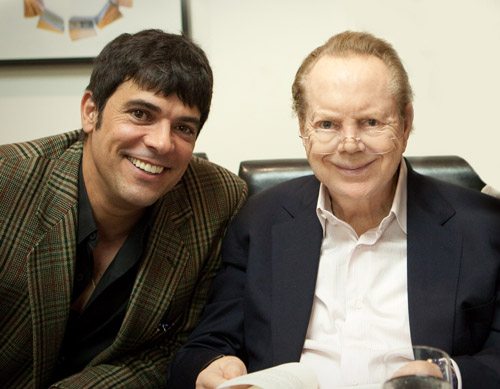
That’s the great lesson for me—you always come back to the love. I came to the conclusion that either J-R is who he says he is, or everybody’s crazy—because he affected all those people. Maybe he could have brainwashed a few people—but all those people had the same inner experiences. I’ve interviewed probably 100 people, and the ripples and effects that J-R has had on people—it’s incredible. I don’t get that when I’m just up here at Mandeville with J-R. But then when I interviewed all these people, I got touched by how J-R touched them. And I could see all the ways that he touched them privately—not just through seminars—but he held everyone’s hand as they went through their lives. I was moved by their being moved. The average interview was about 20 to 40 minutes, and it was like a mini-seminar inside of me. I interviewed Steve Ferrick just before he died, and when the interview ended, he said, “Well, J-R, my bags are packed.” That really trips you out, to interview someone who knows he’s going, and who knows he’s going with the Traveler.
DS: Were there ways that you changed in the process of doing the movie?
JG: I think I got meaner. I’m trying to learn to be more delicate with people. But I learned there is a giant core inside me, and that’s my true self, the part that J-R helped to grow. And it grew by listening inwardly and staying true. Part of the test for people in the Movement, and for everyone else, is whether we get thrown off our path by other people, or whether we stand up and fight the fight of what we need to get done, without hurting someone. I would just make it known that “hey, we’re going to finish this movie.” People would tell me it was impossible. And I would tell them the possibilities. Sometimes I would lie to them. I would tell them what we were going to do, and then I’d leave the room and go, “Oh my God, what are we going to do?” But that was my job to do, not theirs. My job was to go cry to J-R and go, “Please, you’ve got to do something. I think I’ve bitten off more than I can chew.”
We had plenty of time, and plenty of time for disaster. And at the end we got to mix the movie at Warner Bros. with Dane Davis and the Dane Tracks folks who did sound for The Matrix. These were people who aren’t in the Movement who love J-R, who have met him and who like what he has to say. As we were sound mixing the movie you could see how J-R’s seminars would make these people think. Some of them are believers, some are atheists…it doesn’t matter. In the midst of making a movie we were having discussions about philosophy and spirituality. So working with J-R, or doing a movie with J-R, is always fun, even though you’re working so much.
It was hard but it was worth it when we saw the result at the screening on July 5. When I looked out in the audience and saw that full house, with J-R there, the pain was all gone. We flew, like the Wright Brothers. While you’re making the movie, as soon as you think about it you get overwhelmed and it’s over. So what I got out of making this movie was a high-speed line, with high bandwidth, in my connection to the strength and knowledge of what is clear and not clear inside of me. Sometimes it rubs people wrong because I’m not going to make a move until J-R says I can make a move.
So that brings us to right now. A lot of people want it on DVD, so we’re working on the blu-ray. J-R said we’re like Johnny Appleseed, just planting seeds to make the teachings available. If I could keep making movies about J-R I’d love it. We’re showing the film at the film festival in Mar de Plata, Argentina. (We’re showing the 2-hour version.) I want to interview more people, and there will be more on the blu-ray. I don’t want to change the movie, but I can add bonus features to the DVD.
You just don’t know who’s going to be digging J-R. So we’re getting subtitles in a lot of languages so people can see it all over the world—Polish, Japanese, Chinese, Farsi, Hebrew, Russian, Spanish, French, Arabic, Bulgarian. Some people from Abu Dhabi came to the London Premiere. They didn’t understand all the language but they got J-R. So now we’re doing Arabic subtitles. I meet people from different cultures and send them the movie and ask them what they think. I met these Chinese women at the Four Seasons in London and asked them to look at the movie with Chinese subtitles. They thought I was crazy, but they ended up loving it.
And I want to do more screenings. We do a J-R seminar marathon, and then do the movie, and you’re thoroughly doused in J-R. I want to do screenings in San Francisco and South America.
DS: What’s your hope for the movie?
JG: I’ve given up the idea of trying to make money on the movie. If that was the goal I’d be fired, and luckily J-R isn’t requiring it. Someone told me that sometimes the movie is for that one person at that one time. There was this one man in London who rode the bus all the way from Scotland to see the movie, and he got on the bus right after it was over to go back to Edinburgh (about a 12 hour bus trip each way). I said, “The movie is for that guy.” He was so into the movie, and as he left he said it was totally worth the trip. Inside I was like “Yeeeeeahhhhh!!!” That’s what you make the movie for—people like that. I’m hoping we can touch people like that. We can be jaded here in California, because we have so much of this stuff. But you can show this to someone who’s thirsting for it and they go, “Oh my God.”
People here say, “I’ve taken Insight, thank you.” Well how about taking it again? Sometimes you have to get out of your comfort zone. I showed the movie to one famous guy, a friend of Oprah, and he said, “J-R gave me the answer that I needed for the book I’m writing. Thank you.” That’s all I need to hear. I don’t need him to join MSIA. That’s what J-R was always about—what key can he give that one person that would make that person go out and change himself, or change the world.







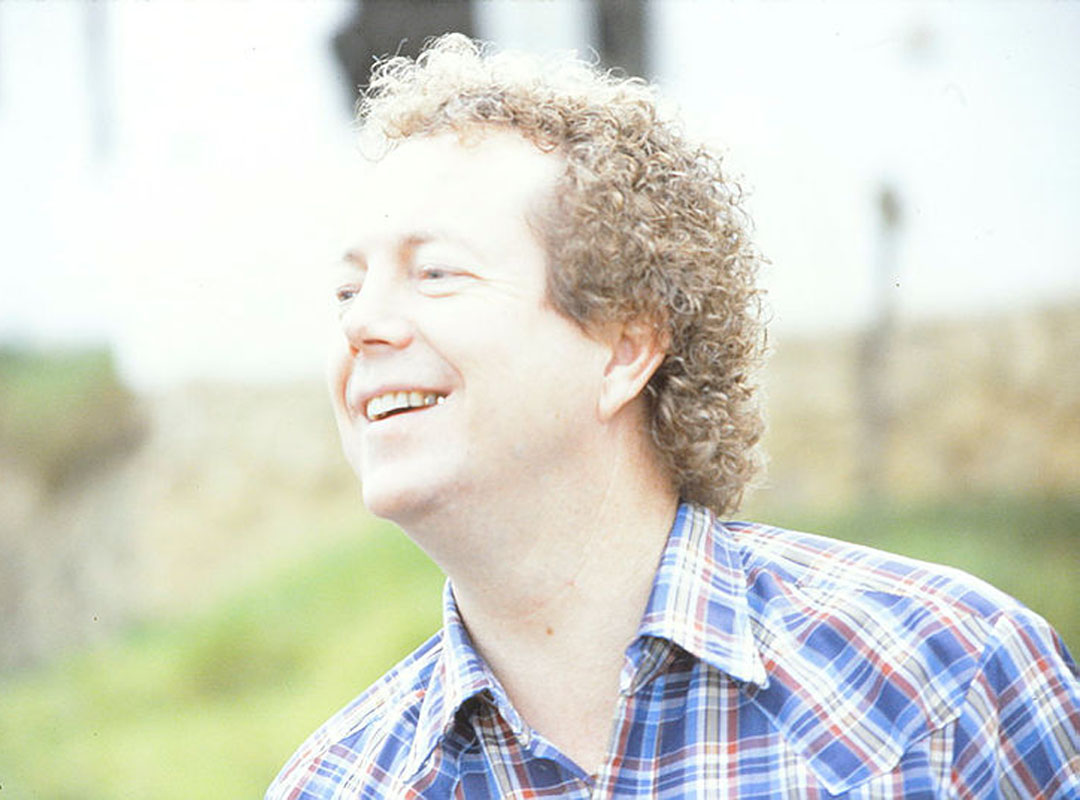

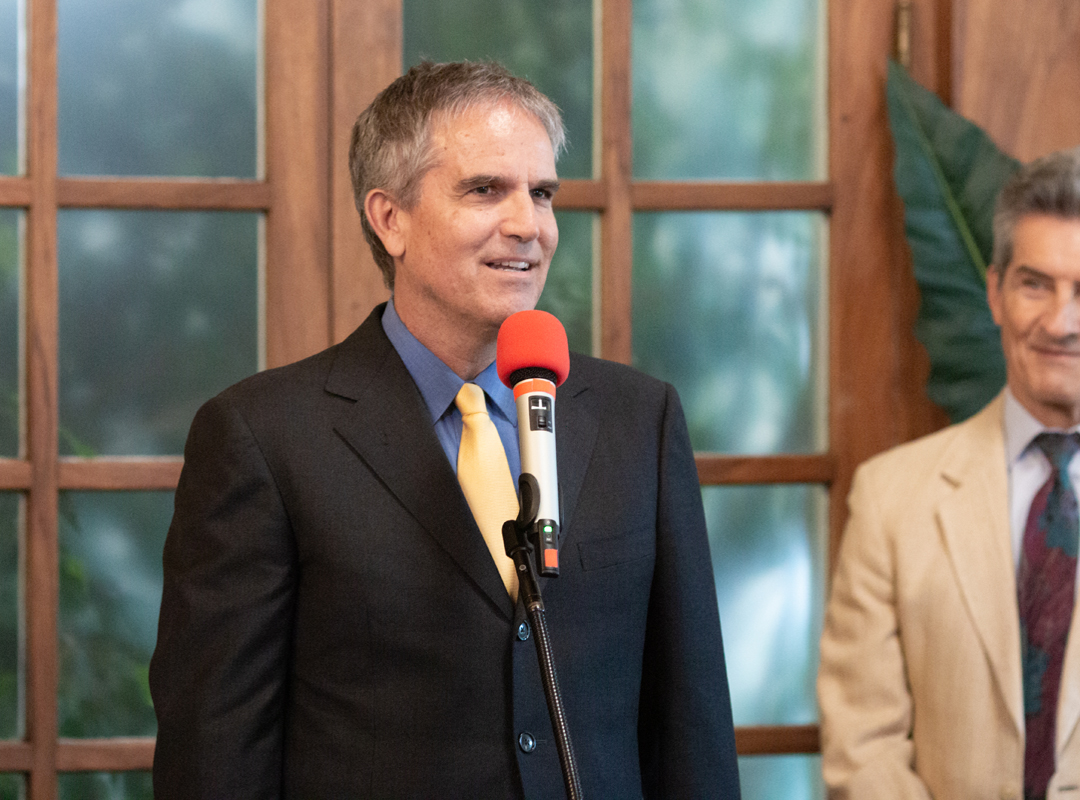
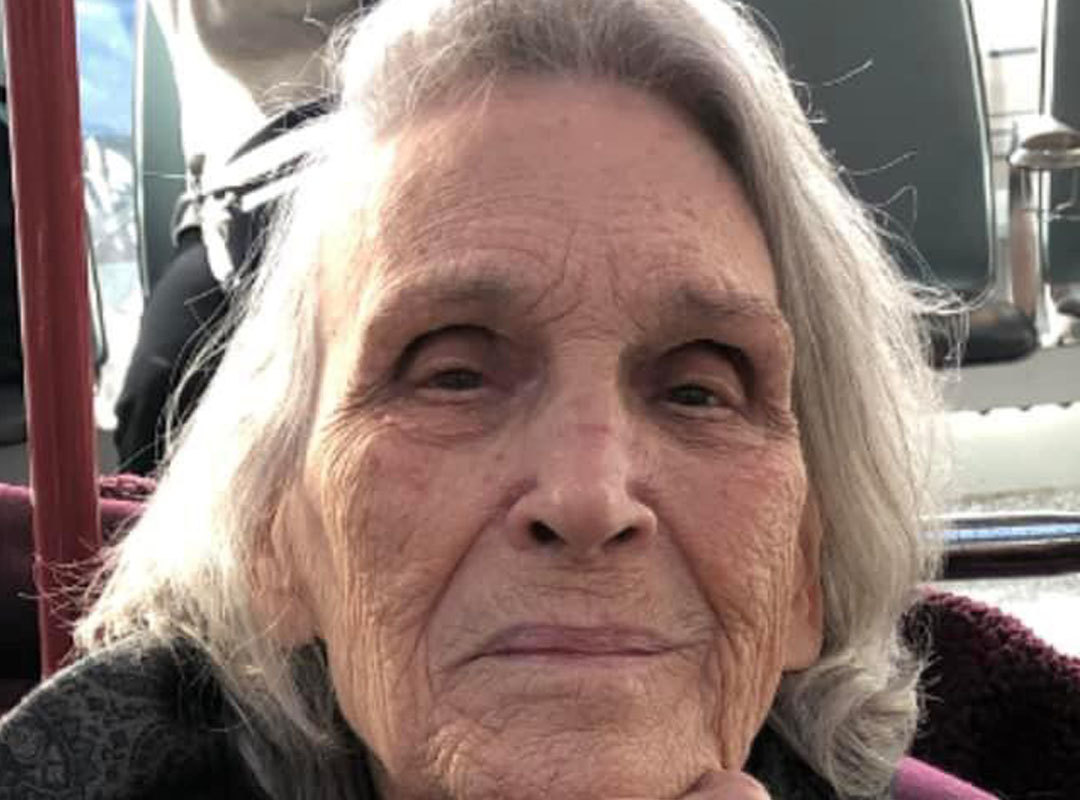
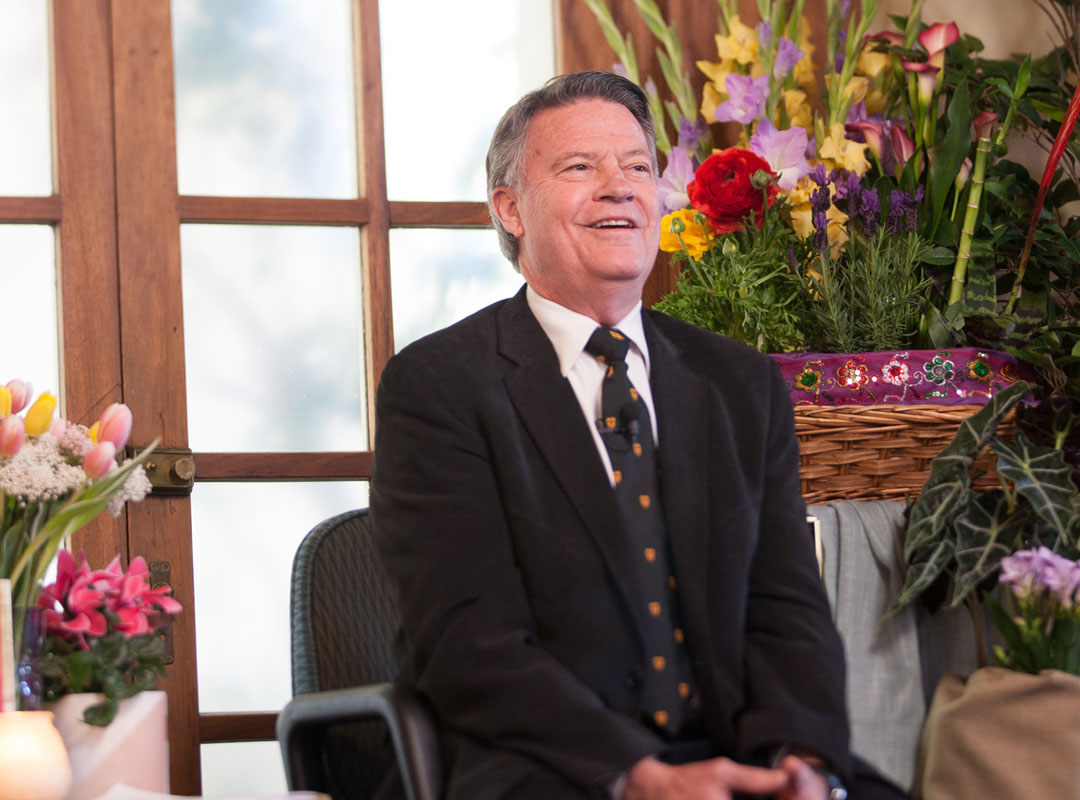

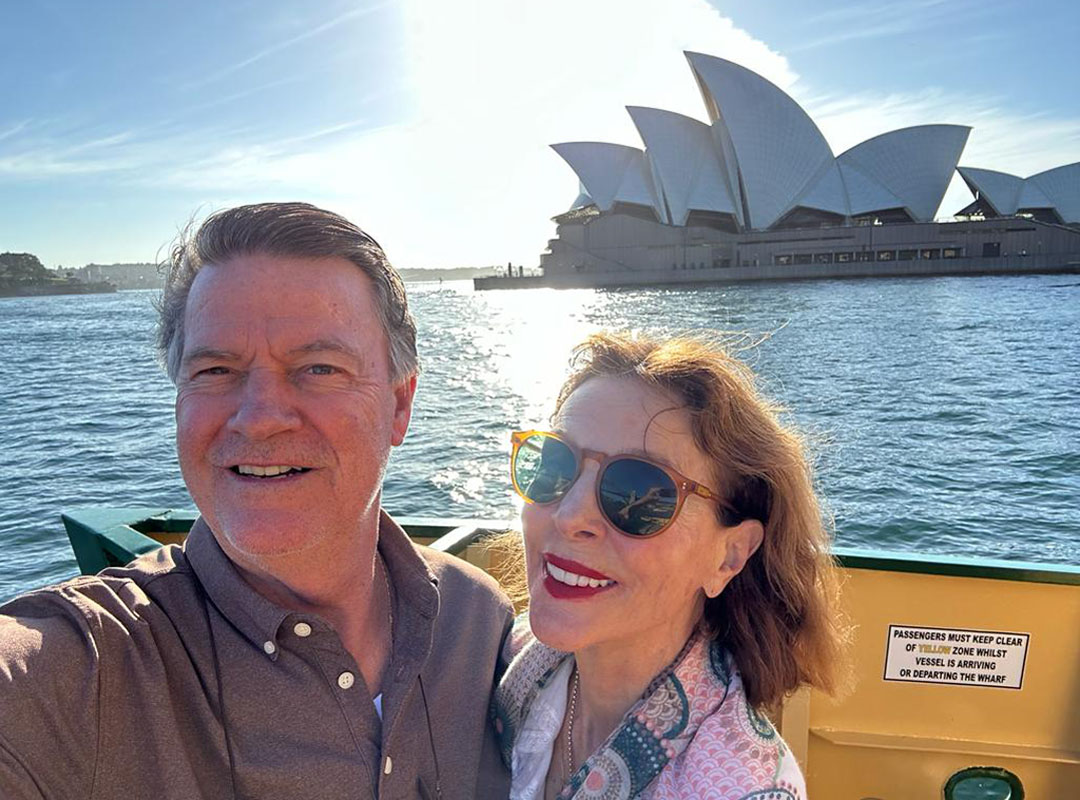
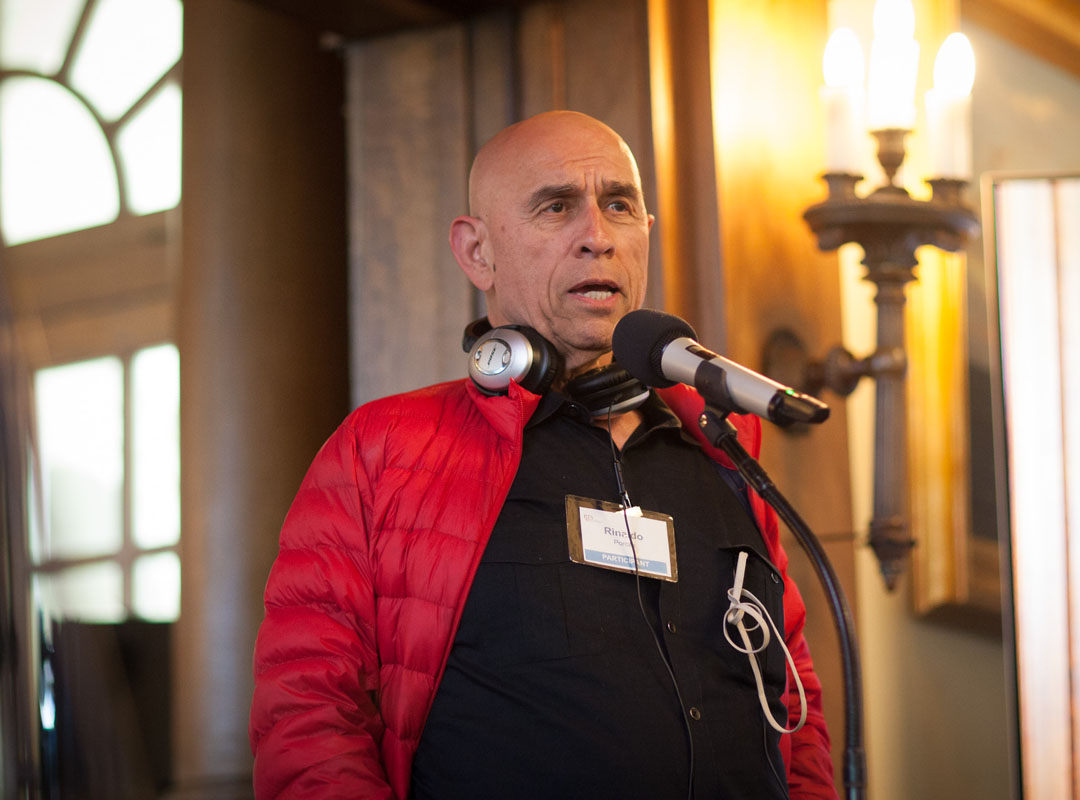

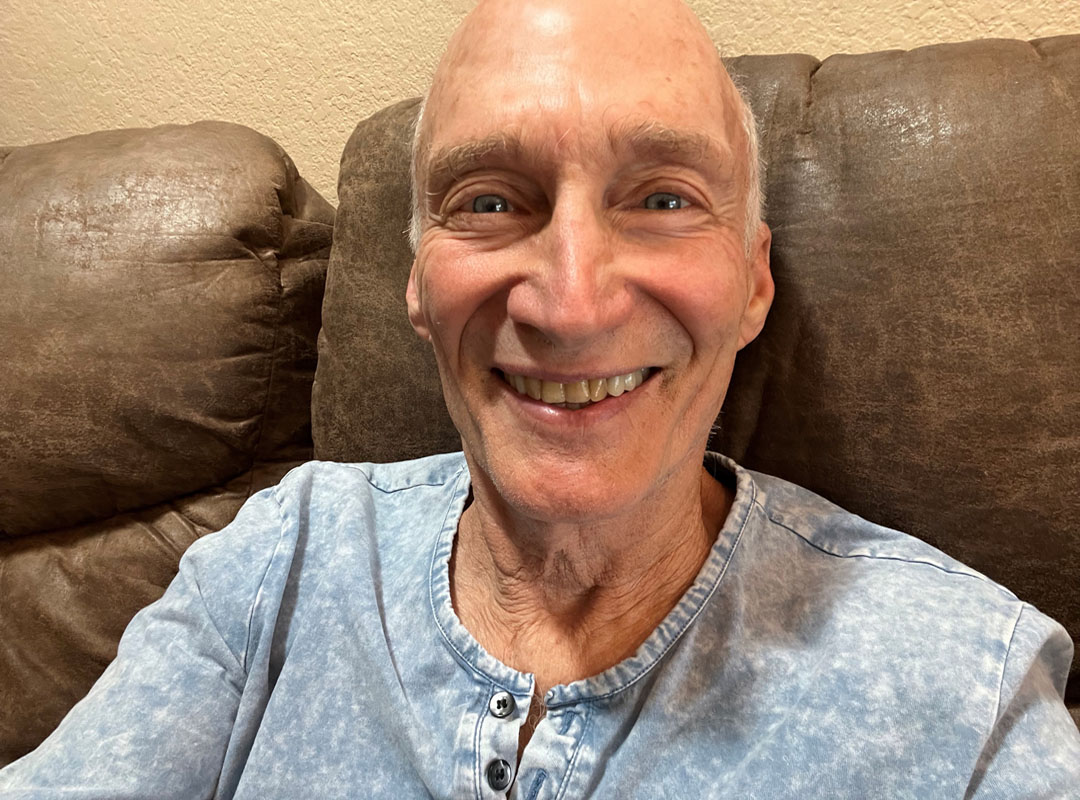
This is a wonderful interview, with so many lessons we can all learn from, and great photos of J-R and Jsu too. Love it.
THIS IS A BRILLIANT BRILLIANT INTERVIEW.ITS SO GREAT HEARING JSU’S BACK STORY ON HOW THE FILM WAS MADE.JSU/JR AN UNBEATABLE LIFE FORCE..I LEARNED SO MUCH…AND THE PICTURES WERE GREAT.
Jsu – Thanks for sharing your truth and process. Filmmaking can be very challenging and you have done a marvelous job with this work. Bless you for enhancing our lives with J-R’s full story and for continuing to spread the teachings. Peace and Love, Robert C. Stone
What a beautiful article ! Thank you so much. With all my Loving – Gudrun
This is such a great article and the willingness to do definitely gave Jsu the ability and the honesty to do and do and do. JR I love you, you are closer to me than my next breath. Jsu you are one of my mentors and ‘Spiritual Warriors’.
Thank you for sharing the intimate backstory with the creation of this beautiful film of J-R’s life and the people he has touched. Jsu,and your team have demonstrated J-R’s teachings and we are so grateful.
This is a wonderful interview Jsu! Thank you for sharing with vulnerability, transparency, awareness, honesty and loving. As our Aussie friends say, “Good on ya mate!”